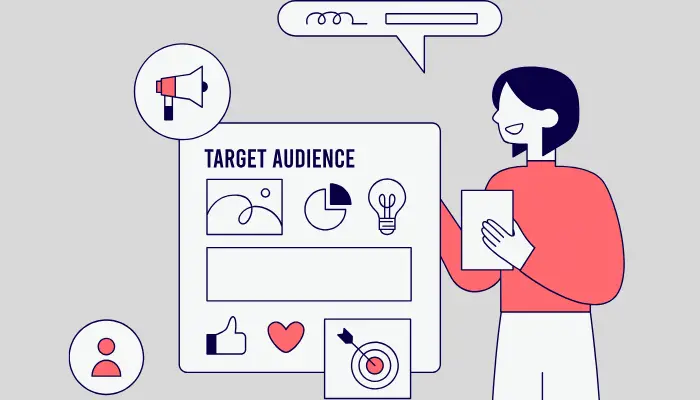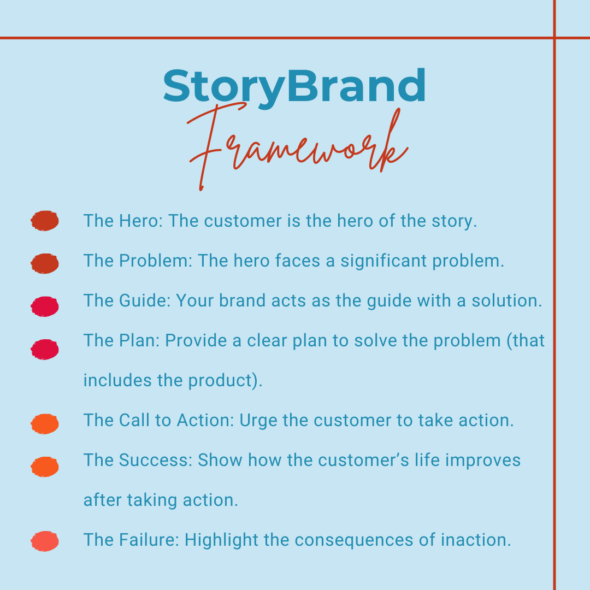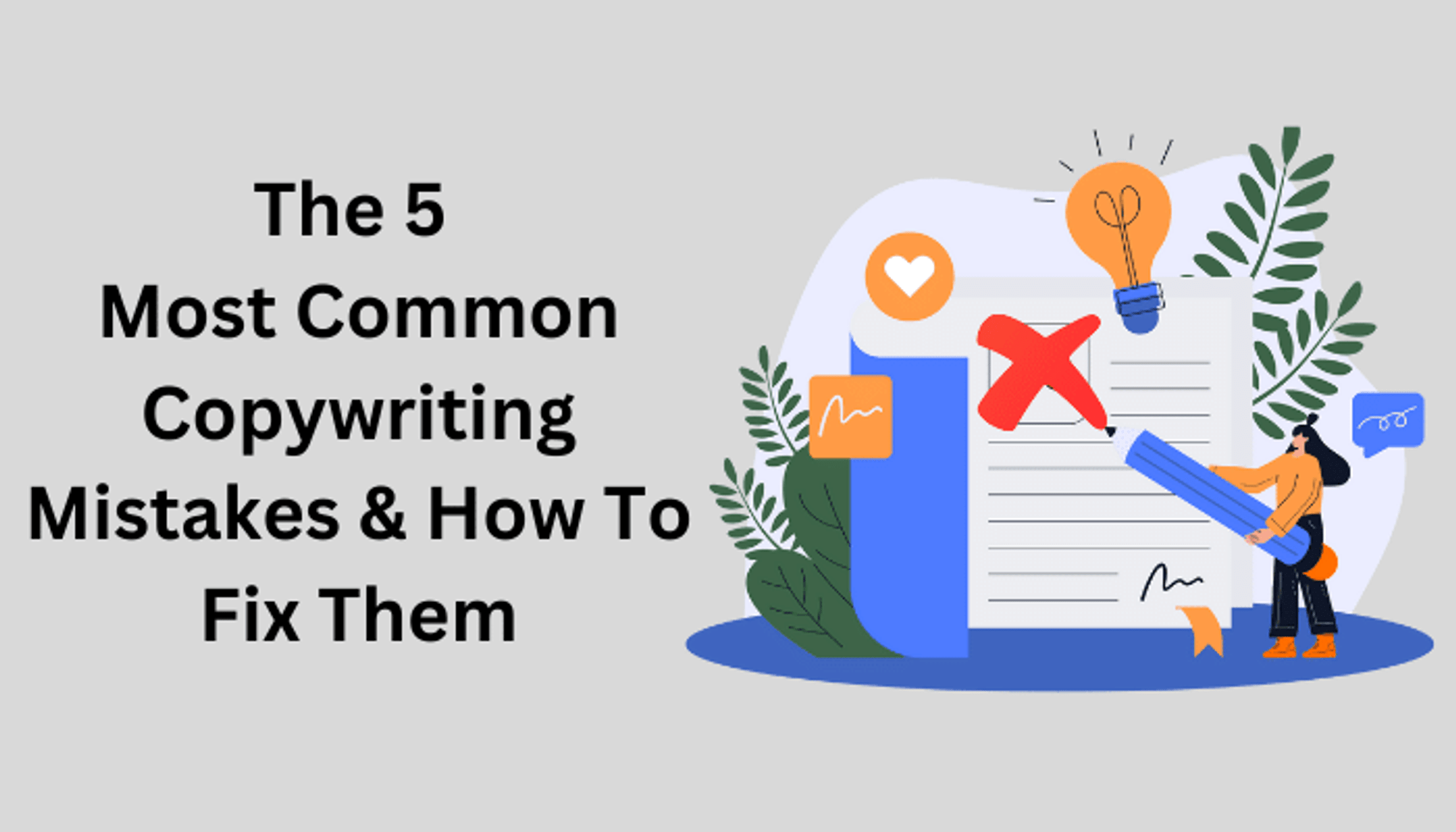As a freelance copywriter, your success hinges on your ability to connect with your client’s audience and drive action. Your role is to craft compelling narratives that not only capture attention but also persuade and inspire readers to take specific actions. Whether you’re working on your own projects or those of your clients, mastering the art of effective communication is key.
Copywriting is more than just writing; it’s about understanding the psychology of your audience and knowing how to influence their decisions through words. It requires a blend of creativity, strategic thinking, and a deep understanding of your client’s goals and their audience’s needs. By honing these skills, you can produce copy that resonates, engages, and converts.
Common Copywriting Mistakes (And How You Can Fix Them)
Here are the most common copywriting mistakes and how to fix them easily, ensuring your work consistently achieves the desired results and stands out in a crowded marketplace.
1. Not Knowing Your Audience

Despite being so fundamental, this is still a common mistake made by copywriters and even experienced marketers. They dive headfirst into writing without any research.
The crux of copywriting is understanding your prospect’s problem and how it affects their life. From there, your goal is to depict how your product or service provides a direct path to resolving their problem.
For example, you’re writing a landing page for a digital marketing company specializing in Facebook ads. Without doing any market research, you start writing the list of product benefits that will go below the product headline:
- We boost your marketing efforts.
- Suitable for businesses of all sizes.
- Packages tailored to your needs.
Pretty vague and unengaging, right?
The audience we’re targeting is D2C brands tired of spending money on ads and not getting results; they’ve most likely tried other marketing agencies and have had negative experiences. Knowing this, let’s improve the bullet points by showing our understanding of the audience:
- Increase your customers by up to 50%.
- Get more clicks from your ads.
- Drive down advertising costs.
This copywriting example taps into the prospect’s main desire to stop burning money and gain more customers. It’s crucial that your copy immediately resonates with the reader, making them feel like they’re understood and encouraging them to continue reading.
After this, you want to list some ways your product/service is superior to the competition, especially if it’s a saturated market.
In a market where customers have already tried many options and still have not gotten results, it’s important to emphasize why you are different from the competition and why they should trust you. This is where social proof enters your copy. In your message, you could add ‘X’ years of industry experience, worked with over ‘X+’ clients, or generated over ‘X amount’ in revenue for our clients.
By truly knowing your audience, you can create copy that speaks directly to their desires and mindset, increasing conversions for your client.
2. Failing To Address The Reader’s Pain Points
If you notice using the pronouns, ‘I’, ‘we’, ‘mine’ and ‘our’ a lot—get rid of them! Many businesses get caught up in telling prospects their story, why their company is so fabulous, and all of their ingenious product features.
But does the prospect, the person you’re trying to convert into a customer, actually care about any of this information and, more importantly, will it bring them any closer to buying the product or service?
NO. 🙅🏽♀️
One of the most important copywriting mistakes to avoid is getting caught up in the story of your client’s company. It’s crucial to understand the problem that your product or service solves. Doing otherwise is like a patient telling a doctor that their ankle hurts, and the doctor prescribes them medication for their heart.
Donald Miller’s StoryBrand framework is an excellent guide to keep you focused on what matters, whether writing a product description or content marketing.

Based on the hero arc commonly seen in movies and stories, this framework helps you create a compelling narrative that resonates with your audience. It consists of seven key steps:
- The Hero: The customer is the hero of the story.
- The Problem: The hero faces a significant problem.
- The Guide: Your brand acts as the guide with a solution.
- The Plan: Provide a clear plan to solve the problem (that includes the product).
- The Call to Action: Urge the customer to take action.
- The Success: Show how the customer’s life improves after taking action.
- The Failure: Highlight the consequences of inaction.
By framing your copy around this structure, you make your writing customer-centric, addressing their pain points and guiding them towards a successful resolution (by buying your product!)
Effective copywriting makes every word about the prospect and creates a picture of how a product can benefit their life. Successful copywriters understand that this trumps the details of the company providing the service.
3. Writing in Jargon

While industry-specific terms might be familiar to some, they can alienate or confuse your audience. Clear, simple language is the key to ensuring your message is understood.
Furthermore, be careful with your word choice. You need to avoid using ornate, unnecessary words or cramming as many keywords into your copy and content for SEO purposes.
So, avoid overusing jargon and make sure your tone of voice is appropriate for your audience. A mantra to remember is, ‘You confuse, you lose’—so keep it simple!
In this example, you’ve been asked to write copy for a new software product. Here’s a version of the software’s key USPs using industry jargon:
- Leverage our cloud-based infrastructure for seamless integration and scalable solutions.
- Utilize our AI-driven analytics to optimize your KPIs.
- Experience unparalleled synergy across multiple platforms.
Now, let’s improve it by eliminating the jargon and making it more accessible:
- Easily connect with other tools using our online system.
- Use our smart data tools to improve your results.
- Work smoothly across different devices.
Just like writing in complicated terms kills any chance of relating to your reader, writing in large, convoluted blocks of text is a big no-no and a common copywriting mistake to avoid.
Instead, break your text up into short, bite-size sections. Not only does this format look more appealing, but it’s easier for our brains to digest short, concise points. This means that after finishing your piece of content, the reader has absorbed many of your points.
💡 Pro Tip: If you’re struggling to articulate the product’s unique selling points (USPs) in a way that connects with prospects, read customer reviews. This gives you a clear understanding of what your customers value most, allowing you to emphasize these points in your copy. Additionally, using the same language and terminology as customers will ensure your copy resonates with the target audience.

4. Missing Benefit-Driven Copy
Another copywriting mistake is focusing too much on the features of the product/service rather than its benefits to the target audience.
Doubling down on benefits is crucial because it connects with the reader emotionally. After all, you demonstrate how the product solves their problems and ultimately improves their lives. Presenting the product as a solution is like illustrating the prospect’s dream outcome within reach.
For example, let’s say one of your clients is a supplement company that wants to increase the sales of their Magnesium Spray. They’ve hired you to change the copy on their product page to boost their conversion rate, especially the bullet points above the fold. Take a look at the copy they currently have:
- Natural magnesium chloride
- 10 sprays = 125mg
- Suitable for ages 12 and over
So a prospect reading this now knows that the magnesium spray contains magnesium chloride, how much is in 10 sprays, and that you should only take it if you’re over 12—not going to lead them to click ‘add to cart,’ is it?! More likely, they’ll join the 87% of prospects who leave the product page 5 seconds after landing.
Now let’s change it to benefit-driven copy:
- Fast relief from restless legs
- Helps you fall asleep faster
- Eases migraines and headaches
Notice that the passive voice in the previous marketing content has been replaced with active voice too. This is a useful writing tip to make your copy direct and engaging.
When it comes to copywriting, the point is to create compelling copy that grabs attention and drives marketing results, which you can’t do without prioritizing benefits over product features.
5. Weak Call To Actions

A powerful CTA is crucial because it guides the reader towards the desired action. At this stage, your copy has already shown that you understand the prospect’s problem, you’ve tapped into their desires and presented your product as the only way to help them achieve their dream outcome.
So now it’s time to call them to action. A CTA aims to lead visitors through the sales process and convert them into paying customers. It’s the final step in turning an interested prospect into a paying customer.
Whether your CTA is for signing up for a lead magnet, purchasing a product or subscribing to emails, make sure the CTA is simple, clear and compelling. Otherwise, your visitors won’t be persuaded to act and your copywriting efforts will be wasted.
Value-centered CTAs can also increase conversions such as ‘Get your free consultation now’ or ‘Start your free trial today.’ These CTAs offer a clear benefit, use action-oriented language, and encourage immediate action. You can also use words that increase urgency; for example, if there is a 1/2 price sale on a product, the CTA could be ‘Get 50% Off.’ These CTAs offer a clear benefit, use action-oriented language, and encourage immediate action. Remember to also test CTA variations in your A/B tests to see what generates the best results.
💡Pro Tip: Copywriters can forget that the messaging around your CTA can be just as important as the CTA itself. Try incorporating psychological triggers such as scarcity (e.g., ‘Only a few left,’ ‘Selling fast’ ) and social proof (e.g., ‘Join thousands of satisfied customers’) to boost the effectiveness of your CTAs.
Write Better Copy and Land More Jobs
It’s time to stop making these common copywriting mistakes and become a better freelance writer. By knowing your audience, addressing pain points, avoiding jargon, focusing on benefits, and using strong CTAs, you’ll write better copy, get more jobs, and earn more money. Remember these tips and take your freelance copywriting to the next level!
About the Author
Marie Barry is a writing fanatic and reading junkie who has studied English Literature for over a decade. Marie’s passion is to encourage more people to discover the wonders of reading and to share her writing tips with aspiring writers.

